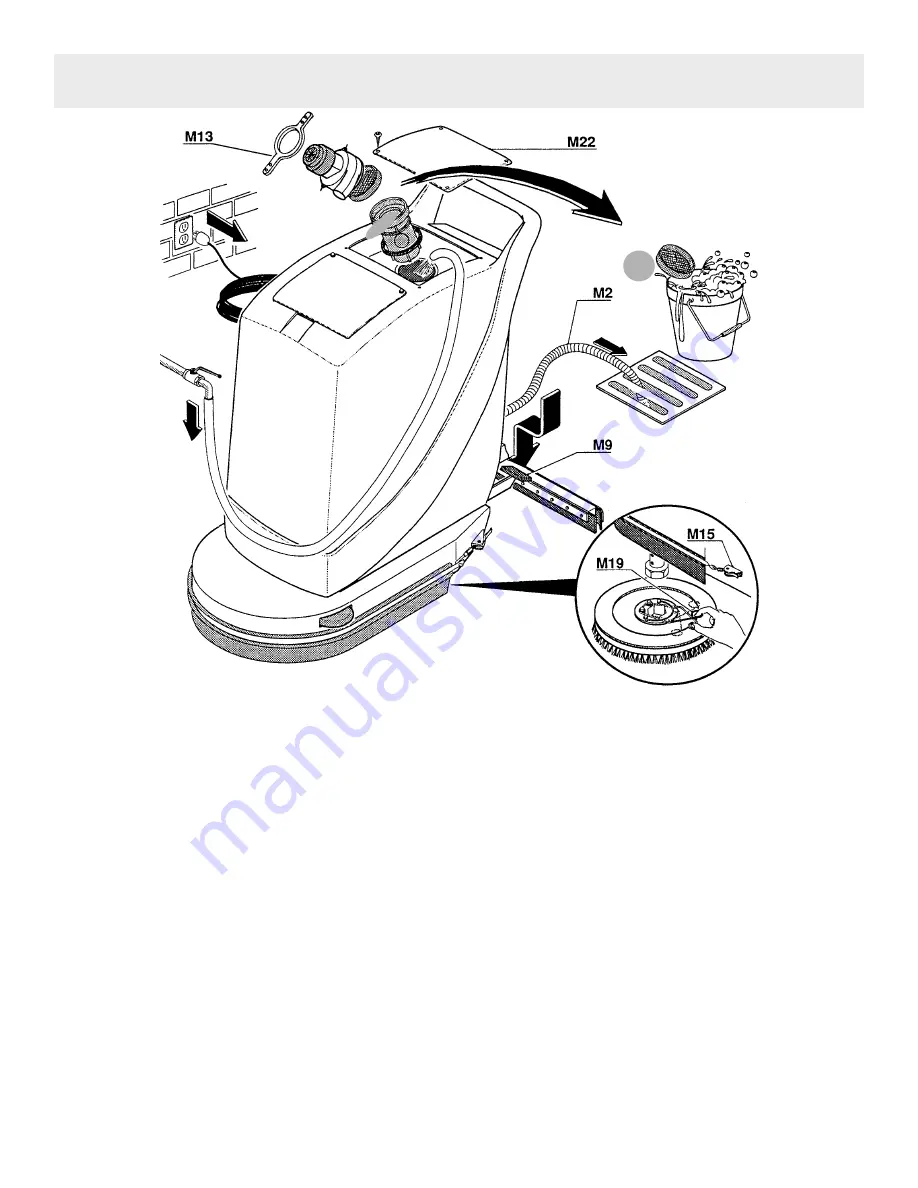
tion without squeegee and vacuum then return to area after a min-
imum of 5 minutes and remove the suspended dirt, finish and
solution.
Squeegee:
Every week, check the blades of the squeegee and
wash them carefully. Then replace them in the correct working
position. If drying is not perfect even after the unit has been
cleaned, replace any blades which are excessively worn. If the
squeegee does not pick up enough water or streaks, lift and wipe
off the blades.
The pad driver or brush must be in good working condition
because it is the component which removes the dirt.
To remove the drive block, pad or brush:
• Fold the vinyl bumper over the left side of the
brush housing.
• Depress the brush pedal (M9) with your right hand
hold the brush position to allow free spinning by hand
of the driver or brush until the scissors style spring
lock can be squeezed with your left hand.
• Depress the brush pedal (M9) completely down
clearing the brush or drive block and slide brush or
driver out from under the housing.
To replace the drive block, pad or brush:
• Hold the brush pedal (M9) down while centering
the brush or driver under coupling. While squeezing the
spring lock together lower the coupling into the driver or
brush center by allowing the brush pedal to raise.
Release the scissors spring lock
The machine is supplied with a pad driver. Brushes in tynex,
poly and steel are available on request, together with floor pads
recommended for use with the pad driver.
Black
for stripping,
green
for deep scrub,
blue
for cleansing and red for light scrub.
Water collection tank:
This tank should be cleaned every week.
Lift the lid and remove the panel or funnel
M1
of the solution
tank. Remove the strap
M13
and lift the vacuum motor out of its
seat. Thoroughly clean the filter and wash out the dirt deposited
in the tank with a jet of water, allowing it to drain out through hose
M2.
If necessary, replace filter. Replace float cage with open side
facing front of scrubber.
- 7 -
GENERAL OPERATION


























